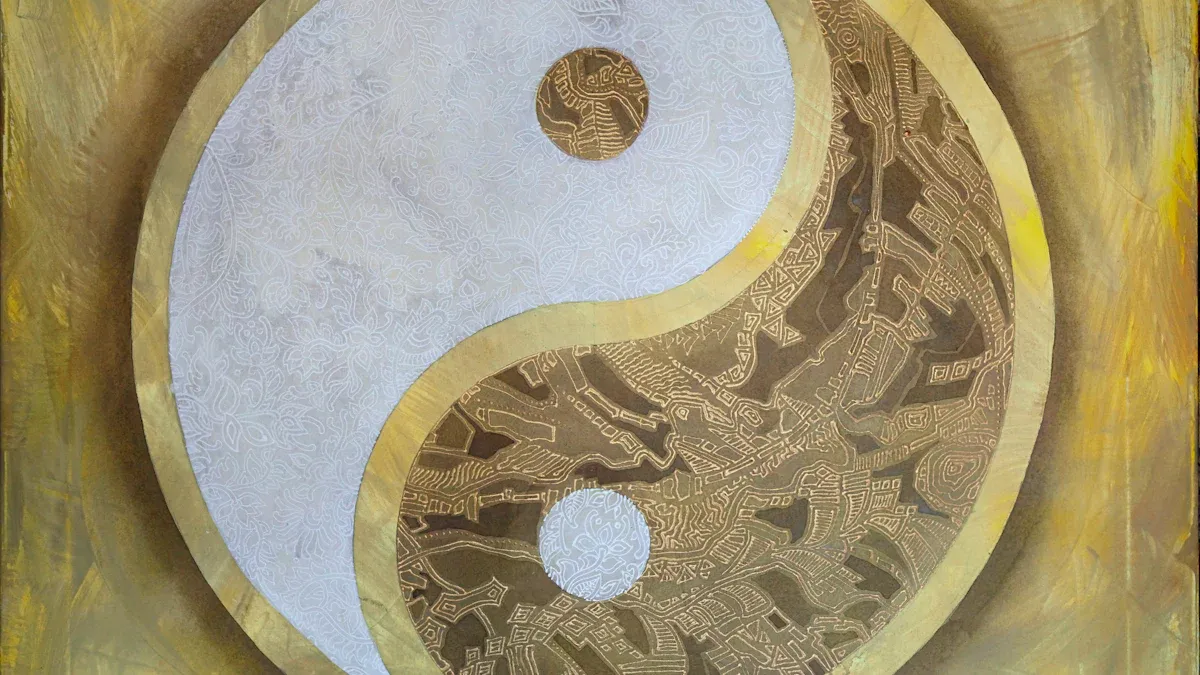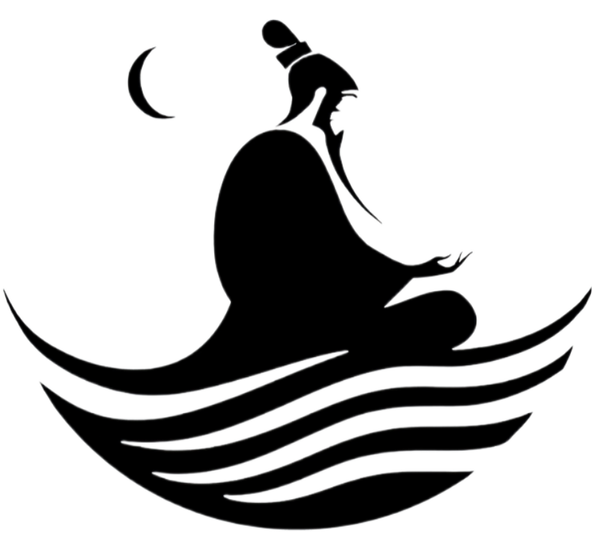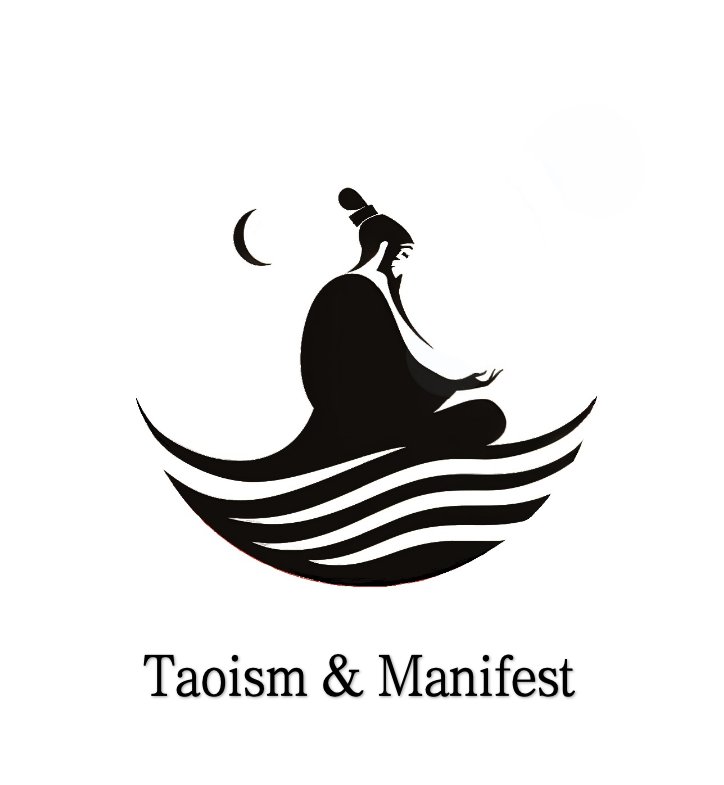
Have you ever woken up to a day that did not go as planned? You might feel frustrated or try to fight against what happens. Taoism teaches you to flow with life, not against it. This philosophy began in ancient China and still shapes daily life for many people. You can find the tao in nature, in quiet moments, and even in busy cities. Today, people around the world discover new ways to explore the tao and embrace acceptance.
Key Takeaways
Stop trying to control everything and move with life like water. This helps you feel calm and less stressed.
Each day, think of three things you are thankful for. This can make you happier and help your mind feel peaceful.
Try to balance your energy by having both quiet and busy times. This helps you feel better and healthier.
Do easy things like meditating, walking mindfully, and being kind. These habits help you feel close to nature and the Tao.
Keep doing these things with patience and regular effort. Over time, you will feel more accepting, peaceful, and calm inside.
Taoism and Acceptance

The Tao and Harmony
You can find the heart of Taoism in the idea of living in harmony with the Tao. The Tao is the natural way of the universe. It is everywhere, but you cannot see or touch it. You feel it when you watch the clouds drift or listen to the wind in the trees. Taoism teaches you to let go of control and accept what comes your way. When you stop fighting against life, you start to flow with it.
Here are some core principles that help you understand acceptance in Taoism:
Embrace the flow of life by letting go of control and allowing change.
Balance yin and yang energies to find harmony in every moment.
Practice inner alchemy to harmonize your qi and align with the Tao.
Live simply and naturally, without chasing after things you do not need.
See yourself as part of nature and respect the world around you.
Show compassion, kindness, and humility to create harmony with others.
Accept impermanence and live fully in the present.
When you follow these ideas, you begin to notice more stillness inside. You feel less stress and more inner peace. Taoism encourages you to see life as a river. Sometimes the water moves fast, sometimes slow, but it always finds its way. You can learn to move with the current instead of against it.
The art of effortless action, or Wu Wei, is a key part of this. Wu wei means acting without forcing things. You do what needs to be done, but you do not push or struggle. Imagine water flowing through rocks. It does not fight the stones; it finds a path around them. When you use wu wei, you accept each moment as it comes and respond with calm and ease. This helps you build a peaceful mind and a gentle heart.
Tao Te Ching Insights
The Tao Te Ching is the main text of Taoism. It offers wisdom about acceptance and harmony. In Chapter 8, the Tao Te Ching compares a wise person to water. Water goes to low places, helps all things grow, and never tries to be first. It is soft but strong. You can learn from water by being flexible and open to change.
“The highest good is like water. Water gives life to the ten thousand things and does not strive.”
— Tao Te Ching, Chapter 8
The Tao Te Ching also teaches you to avoid extremes and keep balance. In Chapter 29, it says not to force things or try to control every detail. When you let go, you find more peace and joy. The text reminds you that acceptance means flowing with life, not fighting it.
Meditation is another important part of Taoism. When you sit in stillness and focus on your breathing meditation, you connect with your qi. This quiet time helps you listen to your heart and accept your feelings. You learn to let thoughts come and go, just like clouds in the sky. Over time, this practice of Tao brings more balance and harmony to your life.
The Tao Te Ching encourages you to trust, show kindness, and lead with peace. When you follow these teachings, you build strong relationships and a calm spirit. You start to see that acceptance is not giving up. It is choosing to live with grace and wisdom, no matter what happens.
Immediate Gratitude Practice
Daily Three Things
You can start each day with a simple Taoist-inspired practice. Take a moment to notice three small things you feel grateful for right now. These can be anything—a warm cup of tea, a smile from a friend, or the sound of birds outside your window. This daily practice does not take much time, but it can change how you see your day.
Gratitude rituals have deep roots in many cultures. Ancient people thanked nature and the world around them for daily blessings. Today, you can use the "three things" practice as a modern way to connect with this tradition. Many people find that writing down three things each day helps them focus on the good, even when life feels hard.
Tip: Try keeping a small notebook by your bed. Each morning or evening, write down three things you appreciate. Over time, you may notice your mood lifting and your outlook becoming brighter.
Research shows that this simple act can boost your well-being. People who keep a gratitude journal often feel more optimistic and confident. They sleep better and have more energy. Practicing gratitude can also help you handle stress and feel more connected to others. When you focus on what is going well, you train your mind to see the positive side of life.
Mindset and Creativity Benefits
Practicing gratitude does more than just make you feel good. It helps your mind grow stronger and more flexible. When you list things you are grateful for, your brain releases chemicals like dopamine and serotonin. These chemicals help you feel happy and calm. They also make it easier to solve problems and think in new ways.
Many people share stories about how gratitude changes their lives. One mother, caring for a child with special needs, found peace by practicing gratitude each day. She learned to focus on small joys, which helped her stay calm and hopeful. Another person, frustrated while cooking, paused to notice what was going well. This shift in focus turned their mood from upset to excited, making the task easier and more fun.
Gratitude also supports creativity. When you feel thankful, your mind opens up. You start to notice new ideas and connections. Artists, writers, and students often say that gratitude helps them find inspiration in everyday moments. By practicing gratitude, you create a space for new thoughts and creative solutions.
You may face challenges when starting a gratitude practice. Life moves fast, and negative feelings can get in the way. To overcome this, set aside a few minutes each day just for gratitude. Use mindfulness to stay present and notice the good around you. If you miss a day, do not worry. The key is to keep going and enjoy the process.
Remember: Practicing gratitude is not about ignoring problems. It is about seeing the whole picture and finding balance. Over time, you will notice more peace, better relationships, and a stronger sense of well-being.
Alignment with Nature

Yin-Yang Balance
Taoism teaches you to live in alignment with nature by understanding the flow of the tao. The tao is the natural way that everything moves and changes. You can see this in the rising sun, the falling rain, and the quiet of stillness at night. Taoism shows you that nature is always changing, and you are a part of this flow. When you accept change, you feel more well-being and less stress.
The idea of yin and yang helps you find balance in your life. Yin and yang are two forces that work together. Yin is soft, cool, and quiet. Yang is warm, active, and bright. You see yin and yang in day and night, rest and movement, or even in your own feelings. Taoism says that both yin and yang are important. You do not need to choose one over the other. Instead, you look for harmony between them.
Yin and yang are always moving and changing.
Each has a little bit of the other inside.
Balance comes from accepting both sides, not fighting against them.
When you follow the principles of balance, you learn to listen to your body and mind. If you feel tired (yin), you rest. If you feel energy (yang), you act. This helps your qi, or life energy, stay strong and healthy. Meditation and breathing meditation can help you notice these changes and keep your qi in balance.
Living Without Resistance
Living in alignment with nature means letting go of resistance. The tao te ching teaches that when you stop fighting against life, you find more peace and well-being. Change is natural, and resisting it only brings stress. You can practice wu wei, or effortless action, by moving with the flow of life instead of pushing against it.
Imagine yourself as a leaf floating on a river. The water carries you forward. You do not need to struggle. You trust the tao and let it guide you.
You can use simple steps to live without resistance:
Accept both good and bad times as part of the natural flow.
Practice meditation to find stillness and connect with your Qi.
Spend time in nature to see how everything changes and grows.
Use mindfulness to notice your feelings and let them pass like clouds.
When you let go of control, you open yourself to new experiences and growth. The practice of tao helps you find inner peace and well-being. By embracing yin and yang, and living in alignment with nature, you create a life filled with balance, stillness, and joy.
Integrating Taoism into Life
Simple Daily Habits
You can bring the wisdom of the tao into your daily life with a few simple habits. Start your morning with a short meditation. Focus on your breath and set a calm intention for the day. This helps your mind feel clear and your qi flow smoothly. Try to notice small moments of beauty in nature, like sunlight through the window or the sound of birds. These moments connect you to the tao and remind you that you are part of a bigger world.
Make gratitude a daily practice. Each evening, write down three things you feel thankful for. This habit shifts your focus from problems to blessings. You can also take mindful walks, paying attention to your steps and the world around you. Letting go of worries in the morning, even for a few minutes, helps you move through the day with less stress. Acts of kindness, like a smile or a helping hand, spread peace to others and nurture your own Qi.
Tip: Keep your space simple and tidy. A clear environment supports a calm mind and helps you stay present.
Building Consistency
Building consistency with these habits takes patience and gentle effort. Start small. Choose one new practice and add it to your routine. As you feel more comfortable, add another. Give yourself time to adjust. If you miss a day, simply begin again without judgment.
Balance is key. Mix moments of activity with times of rest. Notice how your energy shifts between yin and yang throughout the day. Use meditation to check in with your feelings and bring your qi back into harmony. Celebrate small wins, like remembering to pause and breathe or noticing a moment of peace. Over time, you will see changes in your mood, energy, and sense of well-being. The practice of tao is a journey, not a race. Enjoy each step as you grow in cultivation and acceptance.
You can use acceptance to bring more peace and balance into your life. Simple habits like writing down what you feel grateful for each day help you notice small joys and reduce stress. Many people find that these practices lead to better sleep, clearer thinking, and a calmer mind. Remember, acceptance grows over time. Keep reflecting on your progress and enjoy each step as you move forward.
FAQ
What is the main idea behind Taoist philosophy?
Taoist philosophy teaches you to live with nature. You learn to accept change and not try to control everything. This way, you can feel more peace and balance every day.
How can I start cultivating gratitude and harmony each day?
Start by thinking of three things you are thankful for. This easy habit helps you see the good in your life. Try doing this each morning or at night.
What are Taoist meditation practices I can try at home?
You can do breathing exercises or inner smile meditation. Sit still, take deep breaths, and imagine a gentle smile in your heart. These Taoist meditation practices help you feel calm and connect with yourself.
Why is living in harmony with nature important?
Living in harmony with nature helps you handle change and feel less stress. Taoist philosophy shows you how to watch nature and follow its flow for a peaceful life.
How does inner smile meditation help with stress?
Inner smile meditation helps you focus on good feelings. You picture a warm smile inside your body. This practice helps you let go of stress and feel calm.
See Also
What is the Tao that can be told and what inspired the Tao Te Ching
10 Essential Tao Principles for Understanding Taoist Philosophy






